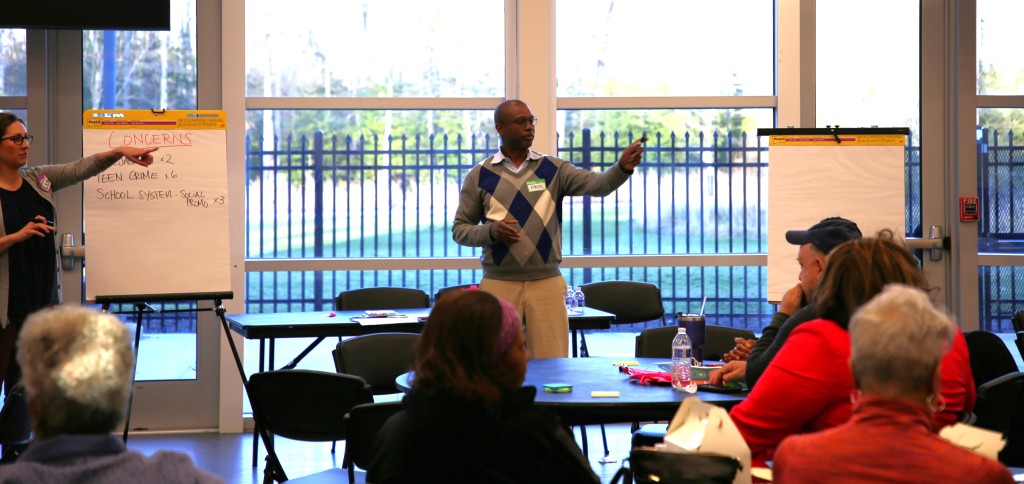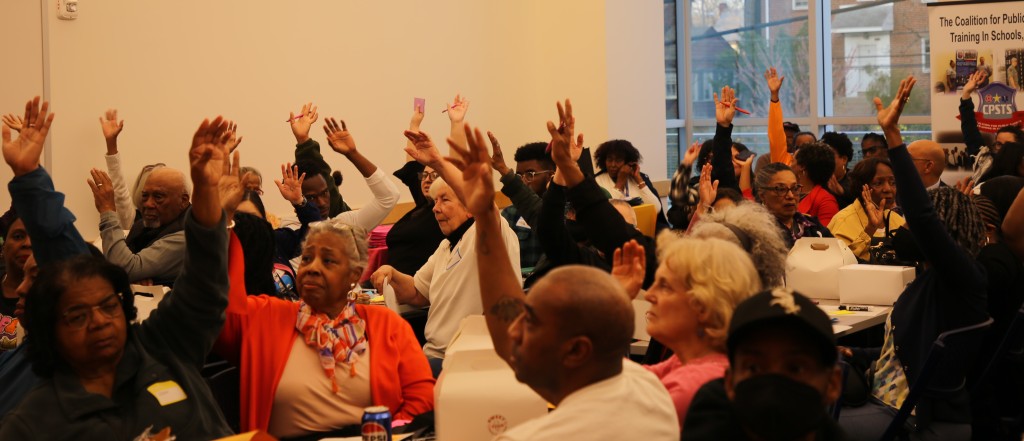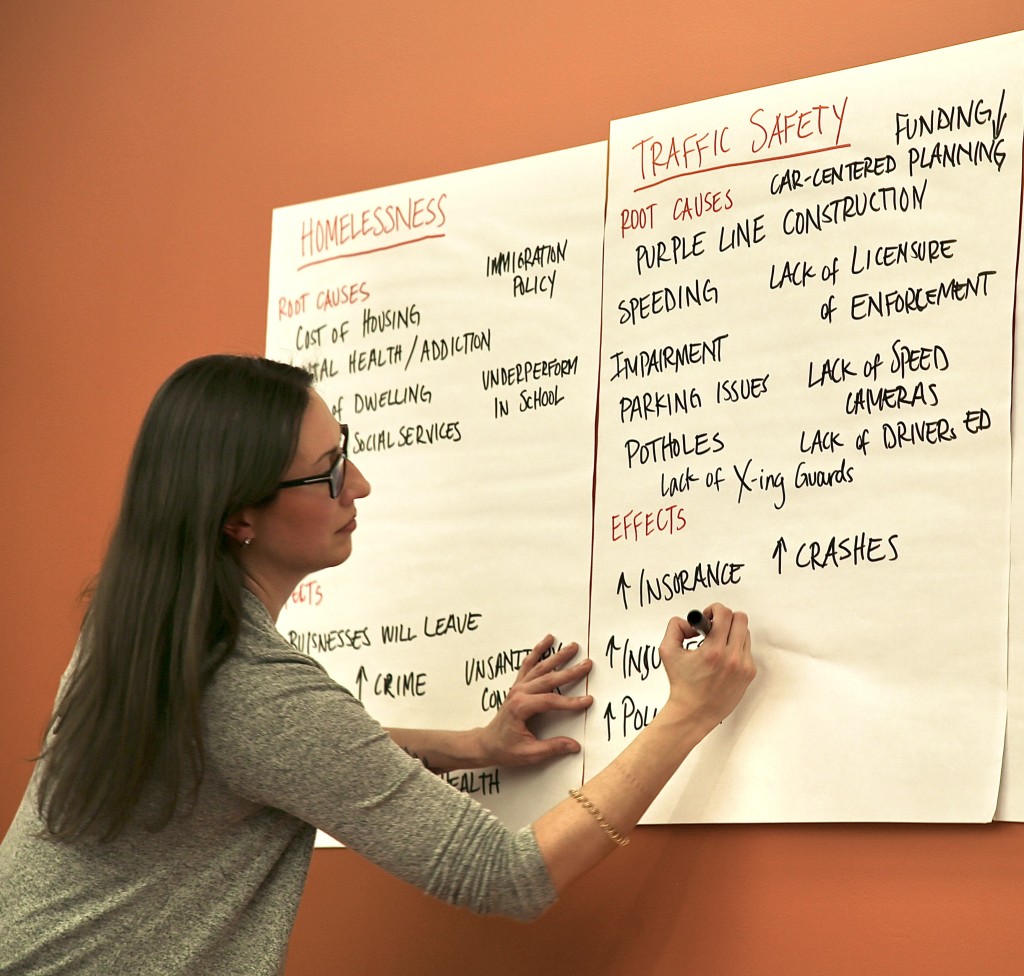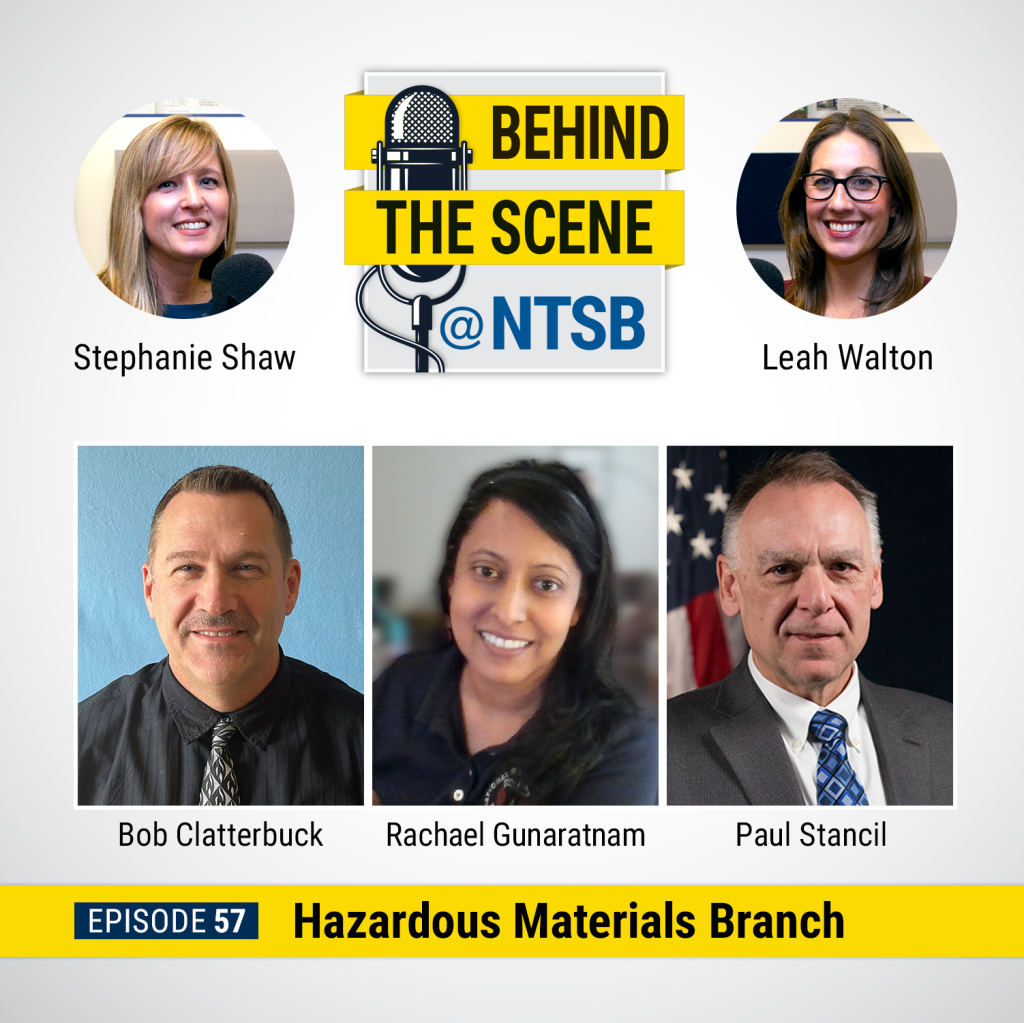By Nicholas Worrell,
Chief, Safety Advocacy Division
NTSB Office of Safety Recommendations and Communications
Recently, members of the Prince George’s County, Maryland, government reached out to the NTSB Safety Advocacy Division to participate in a week of public safety community meetings.
The goal of this countywide listening tour was to learn about constituents’ concerns surrounding public safety and health. County officials called on the NTSB because of our advocacy in road safety and the worrying trends they’ve seen in the county’s road fatalities. In these sessions, community members identified health, human services, and public safety concerns and worked toward solutions.

County Government to Residents: We’re Listening
To gather a diverse perspectives, three events took place over the course of a week. Safety Advocate Leah Walton and I participated as facilitators to capture feedback and lead discussions on traffic safety concerns. Although very similar concerns surfaced in each event, each segment of the county had its own perspective.
Themes that emerged in all sessions were:
- Traffic safety
- Crime
- Youth engagement
- Mental health/homelessness

An NTSB presence helped give the traffic safety topic a seat at the table. Focusing on traffic safety concerns, Leah and I were able to provide a deeper dive into road safety issues. We discussed the road fatality statistics; shared NTSB safety recommendations around setting speeds, distraction, and impaired driving; and directed folks to NTSB.gov for more information. What was great about the sessions is that participants were not only able to share the problem areas in their community, but, through facilitation, they were also able to arrive at insights on several aspects of each issue, like the following:
- Root causes of the problems
- Effects of doing nothing
- Possible solutions
- Outcomes for those solutions
In traffic safety specifically, residents were concerned with:
- Lack of accessible and reliable public transportation
- Speeding
- Lack of enforcement
- Potholes
- Lack of speed cameras
- Lack of driver education
- Distractions
- Accountability
- Road infrastructure
- Impaired driving
Residents expressed concern that if the traffic safety problem wasn’t addressed, fatalities, insurance rates, and economic cost (including lost wages) would all continue to increase. They urged government officials to assess speed cameras and other traffic control devices, improve and repair road infrastructure, increase sobriety checkpoints, and enhance parking enforcement. Residents envisioned these improvements leading to safer citizens, improved mortality rates, and reduced crashes, injuries, and fatalities.
The energized exchanges that occurred during these local listening sessions showed us that the NTSB’s traffic safety concerns align with those of the local community. It was advocacy at its best, and proved the maxim, “All advocacy is local.”

The Advocate’s Takeaway
Advocates know that to connect with the community, to inspire citizens to act as advocates, they must begin by hearing the community’s voice.
To us, this meant that facilitating these sessions was our chance to hear and learn this community’s language. We knew that if we, authentically, put them first, we could not only see the problem through their eyes, but we could also see them as part of the solution. This brought to mind what Nelson Mandela famously said: “If you talk to a man in a language he understands, that goes to his head. If you talk to him in his language, that goes to his heart.”
Through these community events, the NTSB was able to provide valuable information about traffic safety statistics, potential solutions, and behavior changes that the participants could not only implement themselves, but could advocate to their family, friends, neighbors, and other community members. In short, in these sessions, participants became safety messengers as much as community leaders providing feedback to their county leaders.
Ultimately, this is the goal of the NTSB Safety Advocacy team—to inspire behavior change, to improve safety, and to motivate individuals to become community advocates for our recommendations and safety improvements.
Thank you to Councilmember Wanika Fisher, Chair of the County’s Health, Human Services, and Public Safety Committee; Committee Vice Chair Sydney J. Harrison; and County Council Member Calvin S. Hawkins for inviting us to take part in these valuable listening sessions, to learn from and educate citizens, and to help further transportation safety.

